
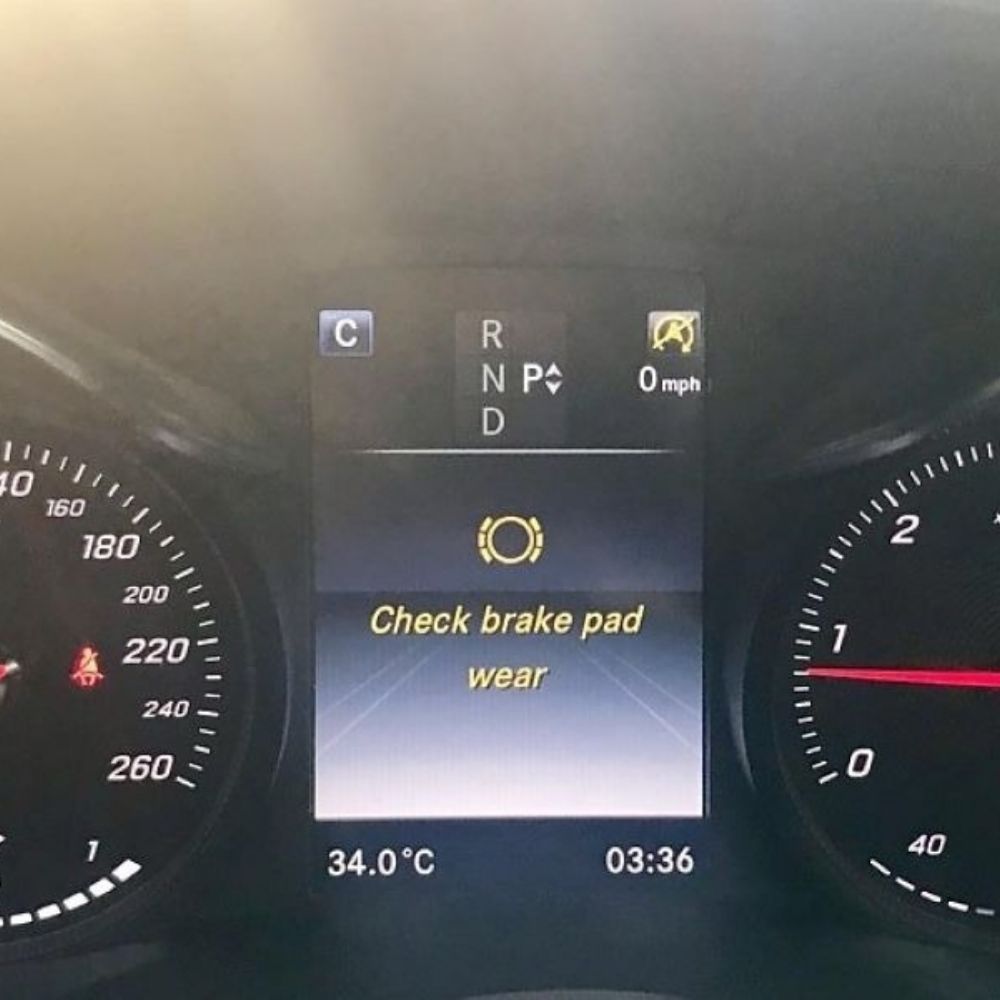
Check brake pad wear Mercedes Warning Message on C300 W205
Contents
- What “Check Brake Pad Wear” Means
- Why the “Check Brake Pad Wear Mercedes” Warning Appears?
- Mercedes Benz Check Brake Pad Wear — Wear Limits & Replacement Thresholds
- Case Study: Mercedes-Benz C300 W205 — Step-by-Step Process
- Step 1: Quick Test & Fault Code Analysis
- Step 2: Visual Inspection of Brake Pads
- Step 3: Replacing Brake Pads and Wear Sensor
- Step 4: Brake Fluid & System Check
- Step 5: Resetting the “Check Brake Pad Wear” Warning
- Common Mistakes to Avoid
- Prevention & Maintenance Tips
- FAQs: Mercedes Benz Check Brake Pad Wear Alert
- Conclusion
When the “Check Brake Pad Wear” warning appears on your dashboard, it’s more than just a routine message—it’s a critical safety alert that your braking system may no longer be operating at optimal performance. This warning indicates that the brake pads or wear sensors have reached their limit and need immediate inspection or replacement to prevent reduced stopping power, rotor damage, or safety risks.
In this AutoExplain guide, we focus specifically on the real-world case of a Mercedes-Benz C300 W205, breaking down what causes the check brake pad wear Mercedes message, how technicians diagnose the issue, and the exact steps to repair and reset the warning correctly. If you’re servicing or owning a W205, this detailed walkthrough ensures you understand the problem and how to handle it the right way.
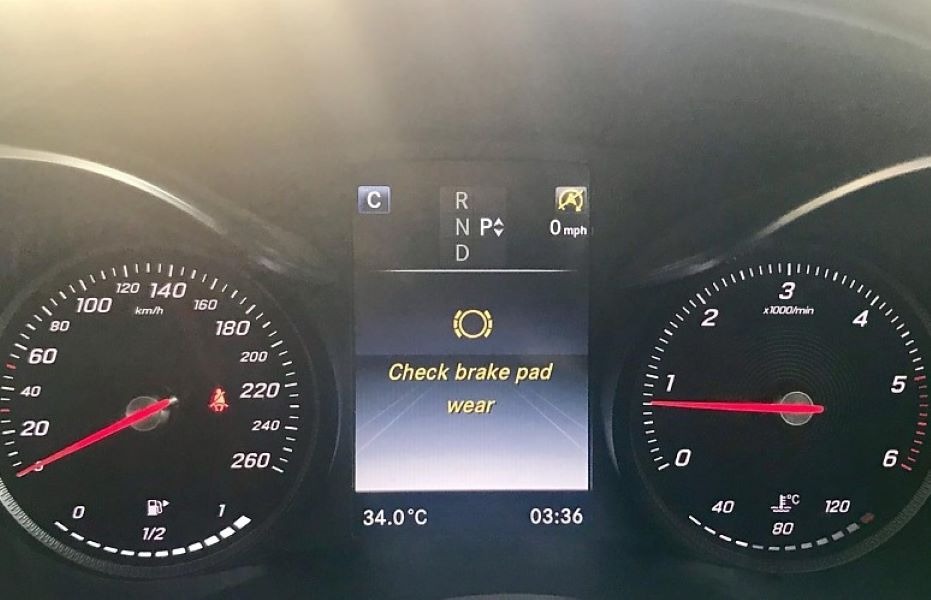
What “Check Brake Pad Wear” Means
Modern Mercedes-Benz vehicles, including the C300 W205, use electronic brake pad wear sensors to monitor pad thickness in real time. When the brake pad material wears down to a preset limit, the sensor makes contact with the brake rotor, completing the circuit and triggering the “Check Brake Pad Wear” warning along with a yellow BRK indicator on the instrument cluster.
The Mercedes Benz check brake pad wear message serves as a safety reminder that the brake pads need to be inspected—and likely replaced. While brake pad wear is a normal part of vehicle operation, it can be accelerated by aggressive driving, frequent stop-and-go traffic, or poor road conditions.
Ignoring the check brake pad wear Mercedes warning can reduce braking efficiency, increase stopping distance, and potentially cause unsafe driving situations. Severely worn pads can even lead to rotor damage, resulting in more costly repairs and compromised braking performance.
When replacing the brake pads, it’s also essential to inspect the brake rotors for heat spots, grooves, or excessive wear. Damaged rotors should be resurfaced or replaced to maintain proper braking force and to avoid vibration or noise.
To prevent the Check Brake Pad Wear message from appearing prematurely and to keep your Mercedes braking system in optimal condition, regular inspections are recommended. A good maintenance guideline is to check brake pads every 10,000 miles, though this varies based on driving habits and terrain.
Other symptoms indicating worn brake pads include:
- Squealing or grinding noise when braking (metal-on-metal contact)
- Pulsation or vibration in the brake pedal (often caused by uneven rotor wear)
- Longer stopping distances or reduced brake response
Staying proactive with brake maintenance ensures a safer drive and helps avoid unexpected brake system warnings on your Mercedes-Benz.
When it comes to braking performance, an efficiently maintained ABS system can make all the difference. Our guide to ABS Auto Brake Service explains the inspection, maintenance, and repair processes that keep your vehicle safe on the road.
Why the “Check Brake Pad Wear Mercedes” Warning Appears?
| Cause | Indicator | Explanation |
|---|---|---|
| Worn brake pads | Dashboard alert + yellow BRK warning | Brake pads have worn down to approximately 3–5 mm. The sensor touches the rotor, completing the circuit and triggering the early warning to protect the rotor from damage. |
| Faulty brake pad wear sensor | Warning remains after brake pad replacement | The wear sensor wire may be broken, improperly seated, or shorted. In some cases, the sensor circuit must be reset or the sensor must be replaced to clear the message. |
Mercedes Benz Check Brake Pad Wear — Wear Limits & Replacement Thresholds
| Pad Thickness | Condition | Recommended Action |
|---|---|---|
| 5 mm | Warning imminent | Prepare for pad replacement soon. |
| 3 mm or less | Safety limit reached | Replace brake pads immediately to avoid rotor damage. |
Ignoring the check brake pad wear Mercedes warning can allow the pad’s metal backing plate to contact the rotor, leading to costly repairs and significantly reduced braking performance.

Case Study: Mercedes-Benz C300 W205 — Step-by-Step Process
Step 1: Quick Test & Fault Code Analysis
- Perform a Quick Test using Mercedes diagnostic software (XENTRY).
- A fault code was detected in the Signal Acquisition Module (SAM), which receives data from the brake pad wear sensors.
- This confirmed the Mercedes Benz check brake pad wear message was valid and not a false signal.
For expert advice on the right diagnostic software or equipment for your Mercedes, contact AutoExplain via WhatsApp: +1 (936) 289 6695 or use the live chat on our website (bottom-right corner) for free guidance from our technicians.
Step 2: Visual Inspection of Brake Pads
- Front brake pads were inspected and found to be below 3 mm, confirming severe wear.
- The wear sensor had already contacted the rotor, which triggered the alert.
Findings:
- Pads: extremely thin with uneven wear.
- Sensor: partially melted wire due to rotor friction.
- Discs: scored surface but still within service limits.
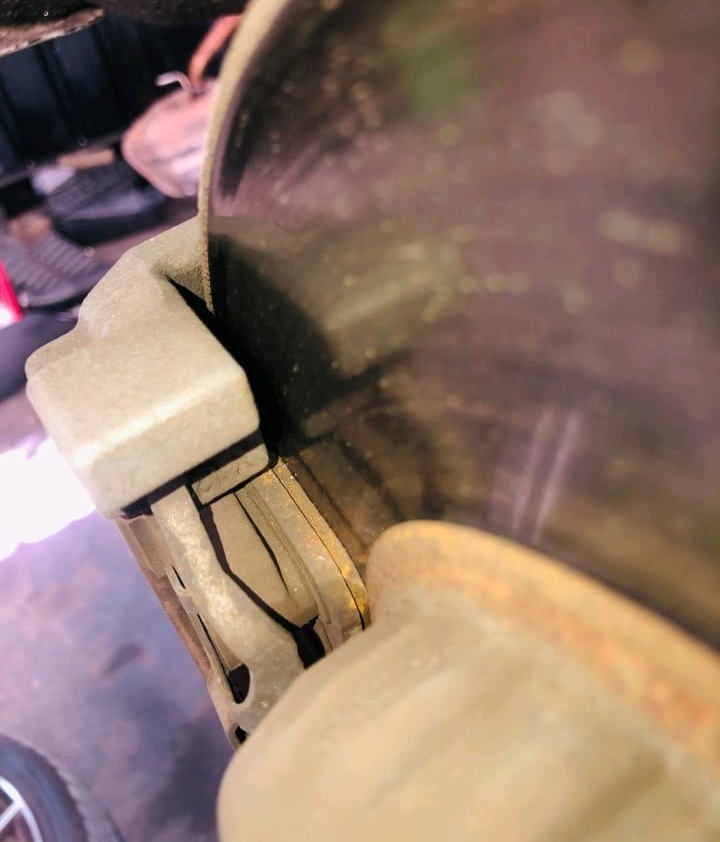
Inspecting Worn Brake Pads on Mercedes C300
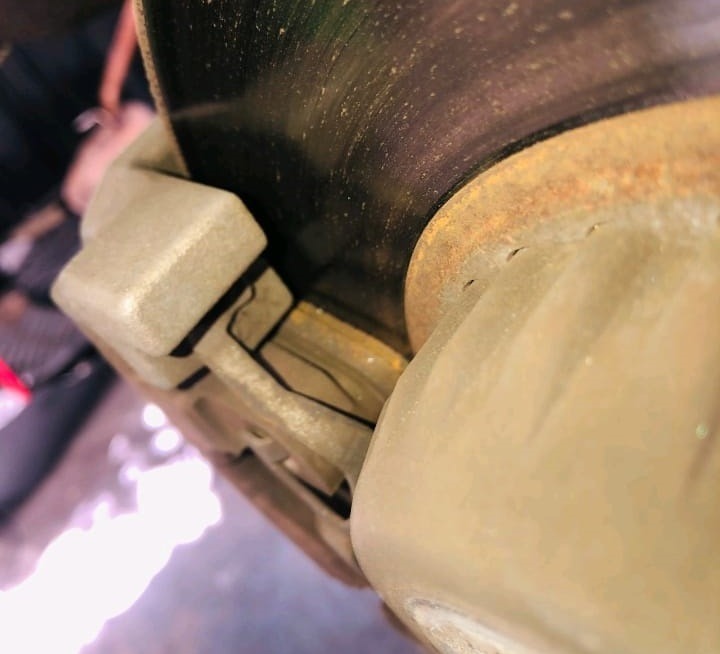
Inspecting Worn Brake Pads on Mercedes C300

Inspecting Worn Brake Pads on Mercedes C300
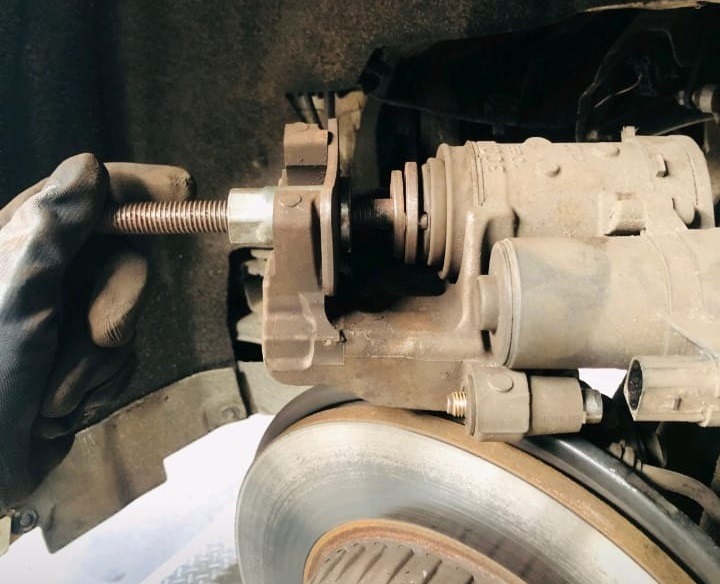
Brake Pad Replacement Mercedes C-Class
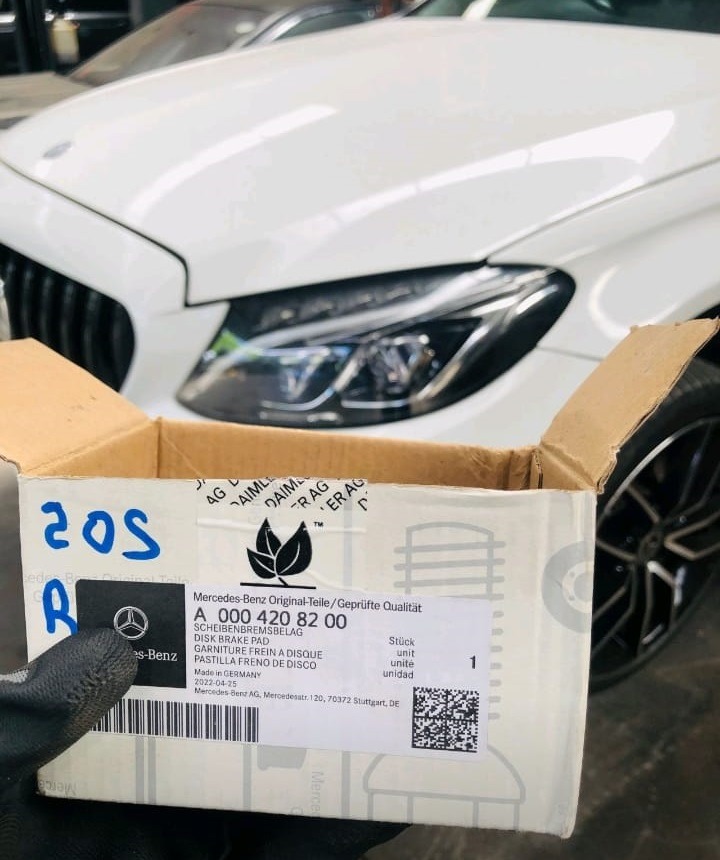
Brake Pad Replacement Mercedes C-Class
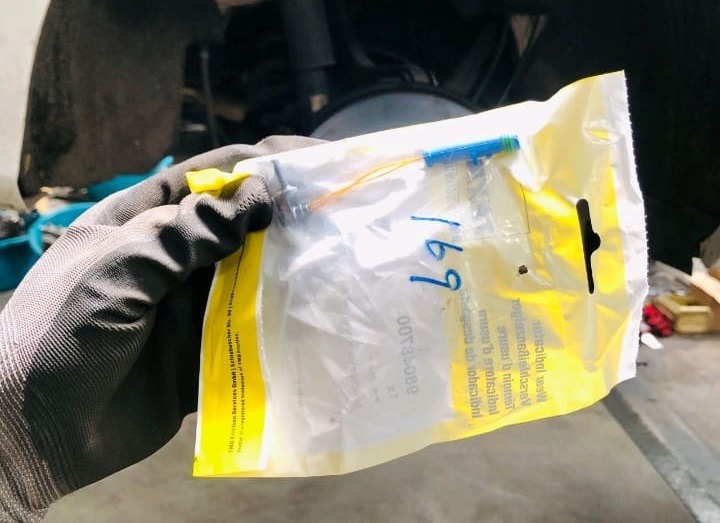
Brake Pad Sensor Replacement Mercedes C-Class
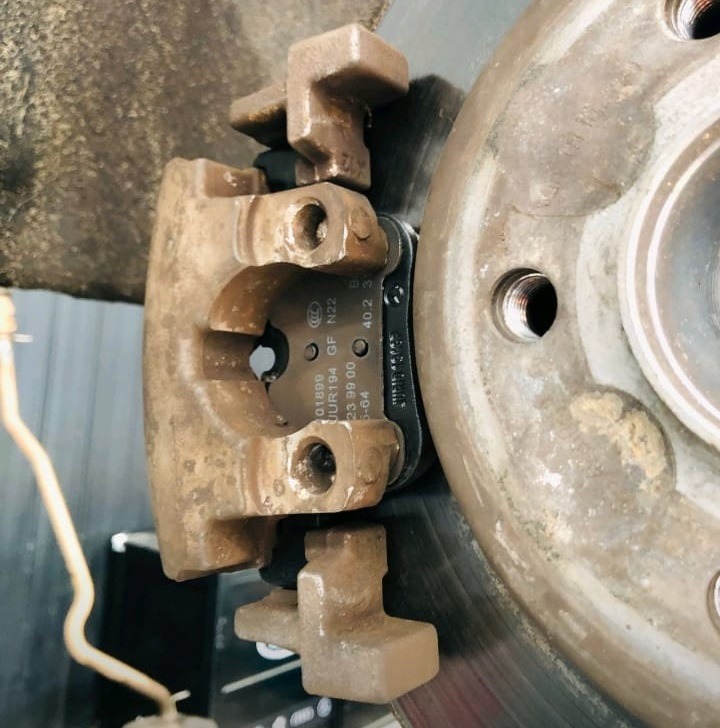
Brake Pad Replacement Mercedes C-Class
Step 3: Replacing Brake Pads and Wear Sensor
Once brake pad wear is confirmed, replacement is required. The wear sensor must always be replaced along with the brake pads to ensure proper monitoring.
Procedure:
- Run Quick Test again and confirm fault codes / affected axle.
- Remove wheel and caliper, ensuring the caliper is supported safely.
- Replace brake pads with OEM or equivalent pads that meet Mercedes specifications.
- Install new wear sensor, clipping it securely into the designated pad slot.
- Inspect rotors and replace or resurface if the thickness is below minimum.
- Clear fault codes and verify no brake pad wear warnings remain.
Step 4: Brake Fluid & System Check
Technicians also performed the following:
- Checked brake fluid level, color, and boiling point condition.
- Inspected for leaks at brake lines and calipers.
- Verified smooth caliper piston movement to ensure proper braking response.
- Low or contaminated brake fluid can mimic worn brake pad symptoms by affecting pedal feel and braking force.
Step 5: Resetting the “Check Brake Pad Wear” Warning
After installing new pads and sensors:
- Turn ignition ON (engine OFF).
- Using the steering wheel controls, go to Service → Brake Pad menu.
- Select “Reset Brake Pad Wear” and hold OK.
- Wait for “Reset Successful”.
- If the message remains, recheck:
- Wear sensor wiring
- SAM module connections
- Module coding (if required on W205)
Common Mistakes to Avoid
- Not replacing the wear sensor: Once the sensor makes contact with the rotor, it becomes unusable and will not reset correctly.
- Skipping rotor inspection: Even with new pads, worn or grooved rotors reduce braking efficiency and can cause vibration.
- Ignoring persistent warnings: A constant alert may indicate a sensor circuit issue, wiring damage, or a fault in the SAM (Signal Acquisition Module).
- Using low-quality aftermarket pads: Cheap pads wear unevenly, generate noise, and may trigger early warnings.
Prevention & Maintenance Tips
- Inspect brake pads every 15,000 km or every 6 months, depending on driving conditions.
- Replace brake fluid every 2 years with DOT 4+ as recommended by Mercedes-Benz.
- Avoid hard braking on overheated rotors, especially after long downhill driving.
- Clean brake pad sensors and connectors during every pad replacement.
- Use OEM or high-quality equivalent components to maintain accurate brake wear detection and optimal safety.
FAQs: Mercedes Benz Check Brake Pad Wear Alert
Q1: Can I drive with the “Check Brake Pad Wear” message on?
You may drive short distances, but extended use is unsafe. The pads may be worn close to the metal backing, which can damage the rotors and severely reduce braking power.
Q2: Do I need to replace the brake pad wear sensor every time?
Yes. The wear sensor is a one-time use component. Once it touches the rotor, it must be replaced to ensure the system can monitor pad thickness correctly.
Q3: What if the warning stays on after replacing the pads and sensor?
Check for:
- A damaged or broken sensor wire
- Poor connector contact
- Incorrect sensor installation
- A fault inside the SAM module
- Missing coding/adaptation on W205 models
Q4: Can I disable the warning without replacing pads or sensor?
No. Disabling the warning without addressing the root cause is unsafe and can lead to rotor damage or braking failure. Always replace worn components and perform a proper reset.
Need Assistance?
If you’re unsure about the process or encounter persistent warnings, contact AutoExplain via WhatsApp: +1 (936) 289 6695 for expert guidance on diagnosing, resetting, or coding your Mercedes brake system.
Conclusion
The “Check Brake Pad Wear” warning on the Mercedes-Benz C300 W205 is a critical safety alert—not just a maintenance reminder. With proper diagnosis, correct pad and sensor replacement, rotor inspection, and a successful system reset, the braking system can be fully restored to safe and accurate operation. Paying attention to this warning ensures both vehicle safety and long-term component durability. If you need support further, please chat with AutoExplain via WhatsApp: +1 (936) 289 6695 for best support.
Read more:


How to turn on BMW Cornering Lights?
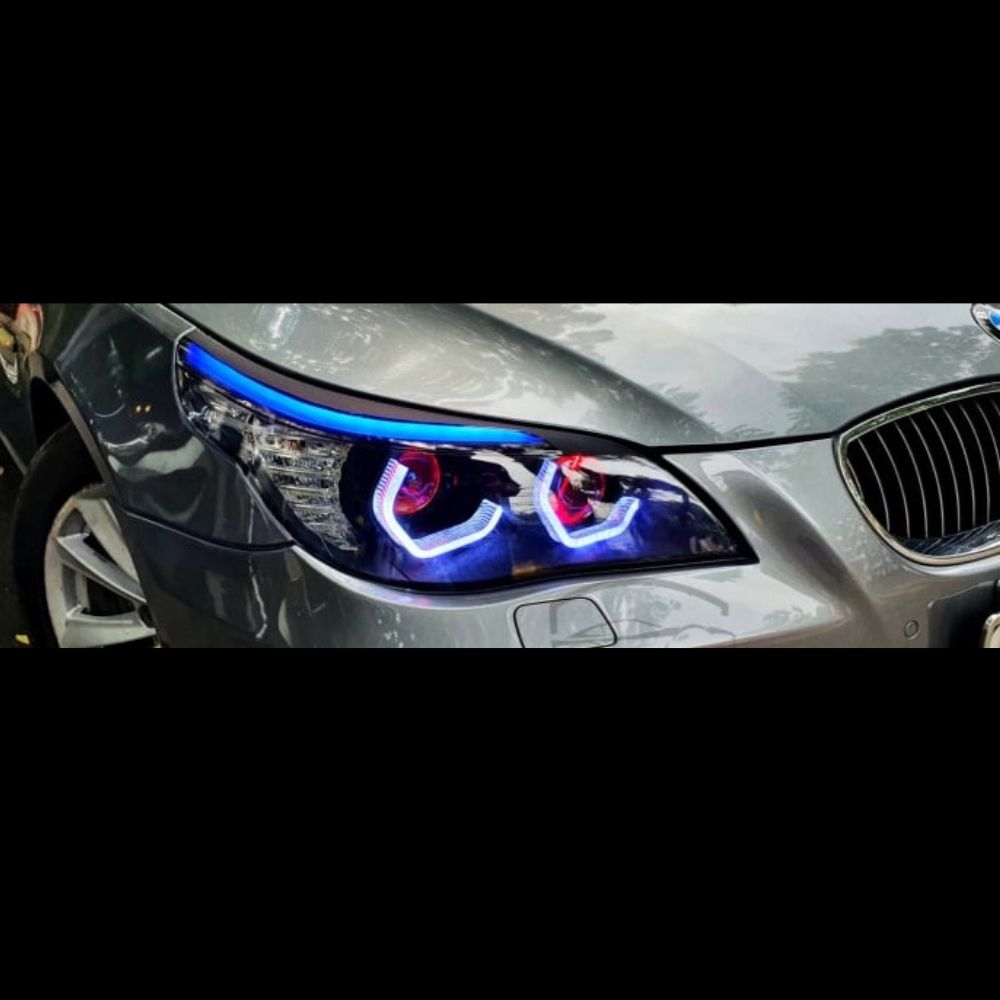
BMW angel eyes brightness coding: How to Adjust
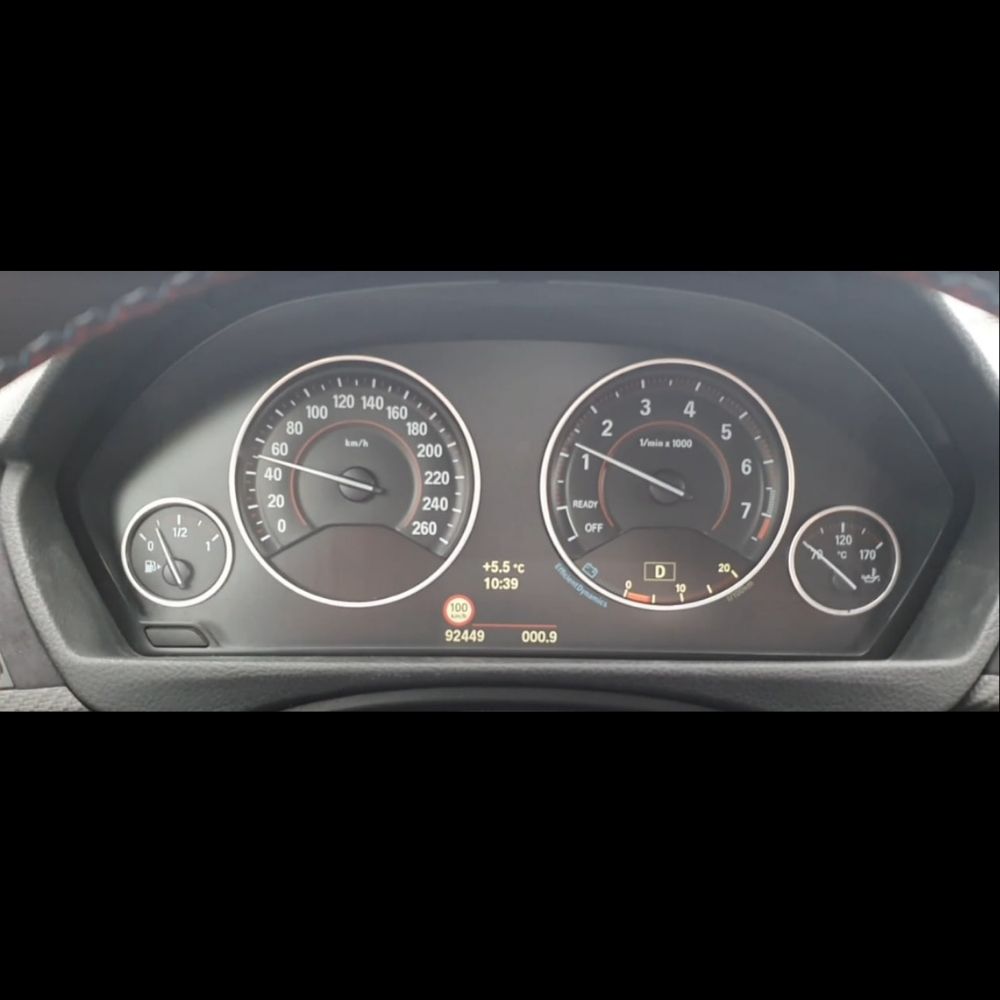
How to Activate BMW Speed Limit Information (SLI) on the F-Series





